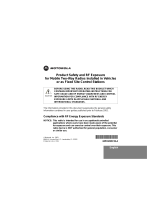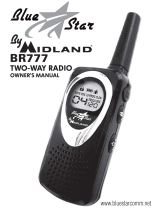
Contents
i
Introduction ...................................... 1
FCC Licensing Information ............. 3
RF Energy Exposure Awareness
and Control Information and
Operational Instructions for
Occupational Use ........................ 5
Radio Controls ............................... 18
Getting Started ............................... 19
Installing the Swivel Belt Holster .. 19
Installing the Batteries .................. 20
Charging the Battery .................... 21
Turning Your Radio On and Off .... 24
Adjusting the Volume ................... 25
Reading the Display ..................... 25
Talking and Receiving ................... 26
Basic Radio Operation ................. 26
Signal Strength and Channel
Busy Indicators .......................... 26
Talk Range ................................... 27
Handsfree Use (VOX)
(CLS1410 only) ......................... 27
Locking the Keypad ...................... 28
Monitoring a Channel .................... 29
Scanning (CLS1410 Only) ............ 29
Programming Mode ........................ 31
Factory Default Settings ............... 32
Entering Programming Mode ........ 33
Cloning Radio Settings .................. 37
Advanced Features ........................ 38
Troubleshooting ............................ 40
Use and Care .................................. 43
Frequencies and Bandwidths ....... 44
Spirit GT Series Programming ...... 50
Warranty .......................................... 51






















